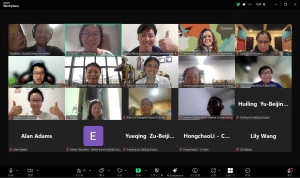Community trusts are a model mainly used by non-profit organizations to raise funds from the public and distribute money to other organizations for project implementation. The model originated from the British Community Chest movement in the 19th century, flourished in the United States after World War II, and has since become one of the main fundraising methods used by charities in China today.
Recently, the Fundraising Innovation Development Center (FIDC) released the Research Report on the Federated Campaigns Model of China’s Philanthropy and Charity (Draft for Comment), which analyzed the feasibility and operability of this fundraising method, and put forward suggestions for its future development.
Current mainstream community trust models include:
Model 1. Sharing of public fundraising permission
As of Dec 20, 2020, only 3,294 foundations in China have been given official permission to raise money from the public. These foundations lend their qualifications to partner NGOs, organize basic operational training courses, and charge fees. The partners are responsible for both the fundraising and project implementation.
Advantages:
Easy for the foundations to quickly expand their scale and impact;
Easy for the partners to raise funds from the public.
Disadvantages:
The partnership between the two parties is usually not close, and both parties can be easily replaced.
Model 2. Joint participation using an internet platform
The foundations, together with an internet platform, jointly design the projects, provide respectively the qualification and fundraising channels for partner NGOs, who need to follow a series of strict standards for the projects’ implementation.
Advantages:
An ideal solution to scale up projects and increase the total funding available to foundations;
The use of internet technologies greatly facilitates fundraising.
Disadvantages:
Foundations and partner NGOs may become too dependent on the platform;
Due to strict entry requirements, it is difficult for many grassroots NGOs to participate.
Model 3. Mutual aid within community trusts
The foundation shares its permission to fundraise with community-based grassroots NGOs; it trains them, and raises funds from the holders in the trusts.
Advantages:
More efficient to carry out fundraising work within the trusts, given the strong ties between grassroots NGOs and the fundraising targets.
Disadvantages:
Confined within the trusts, hard to access the outside world.
Model 4. Joint work on social issues
Promote cooperation between foundations and NGOs on social issues.
Advantages:
High utilization of funds.
Disadvantages:
High requirements for the foundation’s own fundraising capabilities.
Model 5. Community trusts initiated by local governments
At the initiative of a local government, a new grassroots NGO is established to focus on specific local issues.
Advantages:
Similar to the advantages of model three.
Disadvantages:
Highly dependent on support from local government.
Other models
The practices of community trust campaigns at the county level, in poverty-stricken regions, etc.
Among the above-mentioned models, the report warns of the risks of uncertainty due to the replaceability of Model 1, and predicts that it will soon be overtaken by Model 2.
The report also pointed out some of the imperfections of Model 2, for example, the reliance on the internet, which could be a double-edged sword, especially when China’s modern philanthropic system is not yet mature.
Neither NGOs nor foundations could be sufficient in terms of project implementation and fundraising capabilities, to match the rapidly developing internet industry.
Online platforms not only provide massive public exposure, but also illuminate and magnify the various inadequacies of the charitable sector, and thus have a major impact on its long-term development.
For example, influenced by the commercial culture of the internet industry, some foundations and NGOs focus only on fundraising growth and neglect the improvement of projects; they respect only the needs of donors, and ignore the feelings of beneficiaries.
It is true that the internet has helped many NGOs gain unprecedented public attention and financial support, but the philanthropic sector should always focus on its own development, rather than being solely resource-oriented.
At the end, the report proposed suggestions for all parties:
-To foundations with permission to carry out public fundraising:
Expand fundraising capabilities by developing brand image and enhancing the quality of donor services, rather than expanding the scale of projects;
-To NGOs implementing projects:
Pay more attention to improving the ability to solve social problems, rather than the ability to raise funds;
-To internet platforms:
Try to raise public awareness of philanthropy and cultivate a culture of charity, rather than simply pleasing the public.



